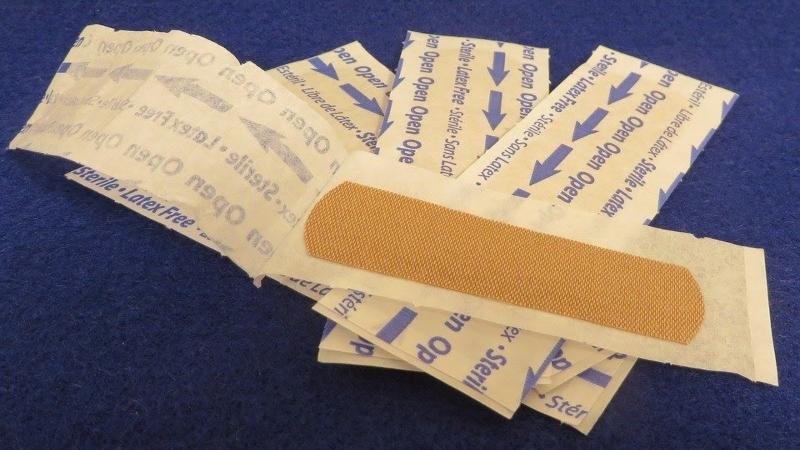
Image by msumuh from Pixabay
Metabolism — or the processing and utilisation of energy resources to sustain life — results in a number of by-product molecules called metabolites. Medical practitioners measure the concentration of these molecules in body fluids such as blood, urine, sweat and saliva to test whether the body is functioning normally. While biannual check-ups suffice for the regular population, people with chronic diseases need to monitor their medical conditions constantly. Similarly, athletes need to closely monitor all metabolites in real-time to check for hypoxia, dehydration and muscle fatigue. Such metabolic monitors need to be wearable and minimally invasive. In a new study, researchers from the Indian Institute of Technology Bombay (IIT Bombay) and Tufts University, United States, have developed a novel sensor to detect metabolite levels from sweat. These sensors can be mounted on adhesive bandages and embedded on garments.
The study was published in NPJ Flexible Electronics and was supported by the Center for Applied Brain and Cognitive Sciences (CABCS), a U.S. Army Combat Capabilities Development Command, Office of Naval Research (ONR), Department of Science and Technology, and the Scheme for the Promotion of Academic and Research Collaboration (SPARC, Ministry of Human Resource Development), Government of India.
“There is a lot of interest in sweat monitoring as it provides a larger window into your health, more than any smartwatch,” says Prof Sameer Sonkusale. He is a Professor at Tufts University and a senior researcher in this study. “Looking for other metabolites in sweat will expand opportunities in medical diagnostics as well,” he adds.
The ions present in sweat present an overall picture of the body’s metabolic state. For instance, low amounts of sodium ions indicate dehydration, ammonium ions are markers for protein digestion, liver function and oxygen levels, and increased levels of lactate ions indicate muscle fatigue. The researchers developed three types of sensors using carbon-coated polyester threads for sensing electrolytes like sodium and ammonium ions, carbon-coated stainless steel threads to test the pH (acidity) and polyester threads coated with an enzyme that oxidises and senses lactate.
The sensors were connected to electronic circuit boards that wirelessly relayed the gathered information to computer programs that calculated the concentrations of different metabolites.
“As soon as the sensor sees a difference in ion concentration, the data is transmitted wirelessly almost instantaneously and displayed on the computer (or phone) screen. I would say it takes around a second for this transmission,” says Prof Sonkusale.
The researchers found that the lactate sensor could detect the metabolites within 5–30 seconds. They propose that this time window is optimal for real-time sensing of metabolite levels. They also found that the sensor threads were specific to the ions they detected and did not respond to similar non-target ions in the solution.
Once the sensor threads and the electronic readout system were assessed individually, it was time to use them on humans. The sensor threads were first activated by placing them in dilute solutions containing their target ions. This was followed by calibration so that all sensor threads functioned at standard levels.
“Chemical sensors need pre-calibration since each sensor may be different due to variations in the fabrication process,” explains Prof Sonkusale.
The sensor threads for sodium ions, ammonium ions, and pH were integrated on one adhesive bandage. The lactate sensors were placed on a separate bandage since their information is processed using a different measuring device. The change in ionic levels is measured through a potentiometer that registers changes in voltage while the lactate concentration is measured in the form of current via an ammeter. The sensor patch was covered with gauze, which provided an absorbent surface to collect the sweat.
“It is a low-cost band-aid-like patch that can be disposed of, once used. The electronics module can be reused,” says Prof Sonkusale while describing the wearable sensor patch. “The disposable textile sensor is biodegradable. For future work, the reusable electronics may also have integrated energy harvesting modules that can derive energy from the surroundings making the sensor sustainable,” adds Prof Maryam Shojaei from IIT Bombay, another senior researcher involved in the study.
The complete sensor bandages were placed on the arms, forehead and lower back of the study participants while performing mild exercises. They took 10–20 minutes to break into a sweat, which was absorbed by the gauze. The sensor detected different ions and allowed the researchers to gather data depicting real-time changes in ionic levels. This data can be used to analyse the fitness of the participants.
“Ionic concentration changes as a function of diet and exercise. These changes happen within minutes. Different participants will release different levels of these ions based on their overall physical health and fitness,” Prof Sonkusale explains.
The study provides a roadmap towards creating sweat sensors that are easily wearable and quick. However, making such a sensor platform is not easy. “Achieving a sensor that seamlessly integrates with the body without any discomfort and inconvenience to the user is quite a challenge since every sensor and electronics platform adds to bulk and rigidity making it incompatible,” says Prof Sonkusale. “Our textile threads serve as ideal substrates since it can be functionalized to monitor different biomarkers in sweat, and can be integrated on any garment or even as a standalone patch. The latter was what we did,” he concludes.
This article has been run past the researchers, whose work is covered, to ensure accuracy.






